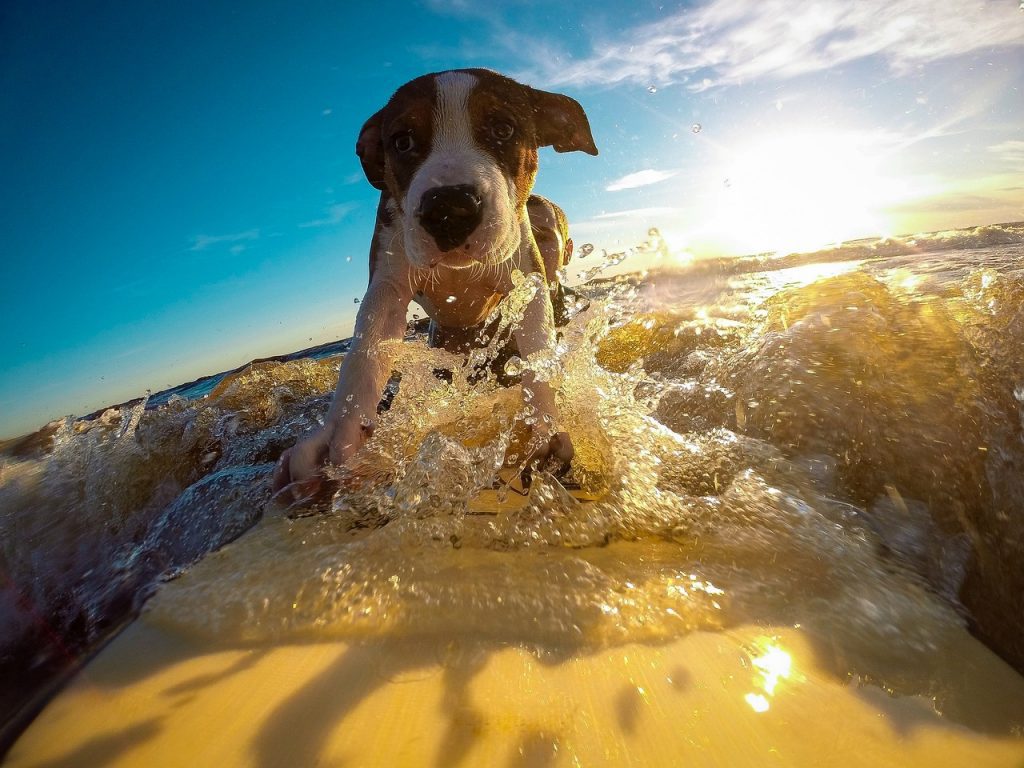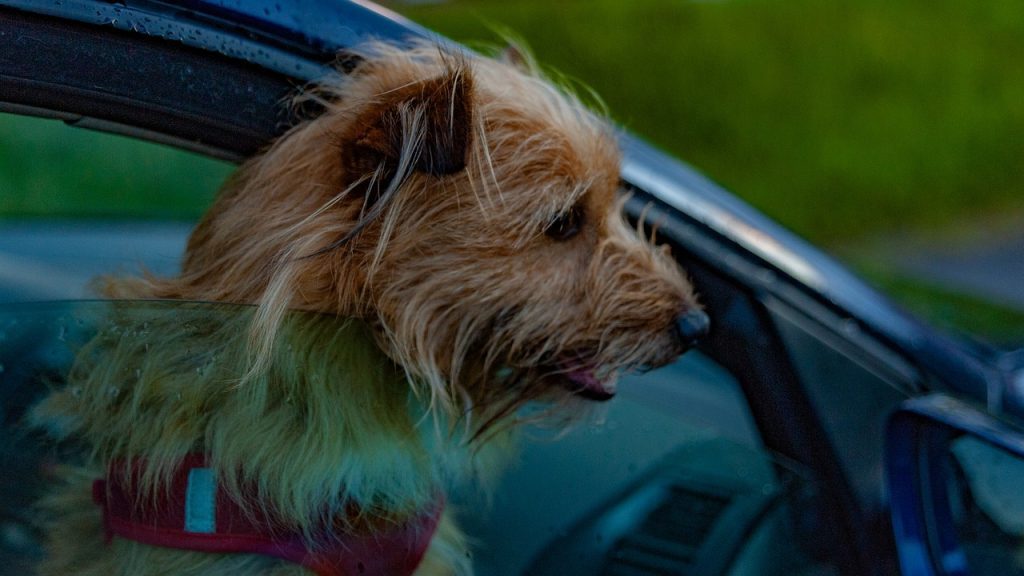Summer is a fun and exciting time for both dogs and their owners. However, the hot weather and sun can pose a number of risks to your furry companion. As a responsible pet owner, it’s important to be aware of the potential dangers and take steps to keep your dog safe and healthy during the summer months. In this article, we’ll share seven essential tips for keeping your dog safe during the summer, so you and your pet can enjoy the season to the fullest.
1. Understand the Risks of Heatstroke in Dogs
Summer is a wonderful time to enjoy with your furry friend, but the heat can be dangerous if you’re not careful. The most common heat-related illness in dogs is heatstroke, which can be life-threatening if left untreated. To keep your dog safe, it’s important to understand the risks of heatstroke and know what to do if your dog shows symptoms.
Learn the Symptoms of Heatstroke in Dogs
The signs of heatstroke in dogs include panting, lethargy, vomiting, diarrhoea, and collapse. If you notice any of these symptoms, it’s crucial to act quickly. Heatstroke can lead to serious complications such as organ damage, seizures, or even death. Call your vet right away, and start cooling your dog down immediately.
Know Your Dog’s Risk Factors
Some dogs are at a higher risk of heatstroke than others. Dogs with thick fur, short snouts, or underlying health conditions are more vulnerable to heat exhaustion. Also, senior dogs and young puppies are more sensitive to high temperatures. If your dog falls into any of these categories, take extra precautions to keep them cool and comfortable during the summer months.
2. Provide Ample Shade and Water for Your Dog
One of the simplest ways to keep your dog cool in hot weather is to provide plenty of shade and fresh water. Here are some tips to help you do it:
Find Shaded Areas for Your Dog
Whether you’re at home or out for a walk, look for areas with natural shade to rest with your dog. If you’re spending time in your yard, set up a canopy or umbrella to create a shaded spot. When you’re out and about, plan your route around parks with trees or other shaded areas.
Provide Fresh and Cool Water
Always make sure your dog has access to clean and cool water, especially during summer. Keep water bowls in shaded areas and refill them frequently to ensure your dog stays hydrated. Adding ice cubes to the water bowl can help keep the water cooler for longer.


Consider Using a Doggie Pool
If your dog loves to swim, consider setting up a doggie pool in your yard. This will give your dog a chance to cool off and have fun in the sun at the same time. Plus, it’s a great way to tire out your dog without the risk of overheating.
3. Adjust Your Exercise Routine Accordingly
Regular exercise is essential for your dog’s health, but you may need to adjust your routine during the summer months to avoid heat-related problems. Here are some ways to do it:
Exercise Your Dog During Cooler Times of the Day
Early morning or late evening is the best time to exercise your dog during summer. These are the coolest times of the day, so your dog is less likely to overheat. Avoid exercising your dog during the hottest part of the day, which is usually between 11 am and 3 pm.
Take Frequent Breaks and Rest in the Shade
When you’re out exercising your dog, take frequent breaks to allow your dog to rest and cool down. Find a shaded area to rest in and let your dog drink plenty of water. If your dog is panting heavily, take a longer break or call it a day.
Adjust the Intensity and Duration of Exercise
If your dog is not used to exercising in hot weather, start slow and gradually increase the intensity and duration of exercise. This will give their body time to adjust to the heat. Avoid strenuous activities such as running or agility training during hot weather.
4. Never Leave Your Dog Alone in a Hot Car
Leaving your dog alone in a parked car on a hot day is one of the most dangerous things you can do. Here’s why:


Understand the Dangers of Leaving Your Dog in a Hot Car
Even with the windows cracked open, the temperature inside a parked car can rise rapidly, reaching dangerous levels in just a few minutes. This can cause heatstroke and other life-threatening conditions, such as organ failure or brain damage. Never leave your dog alone in a parked car during hot weather, even for a short time.
Alternatives to Leaving Your Dog in the Car
If you need to run errands, consider leaving your dog at home or finding a pet-friendly business that will allow you to bring your dog inside. If you’re going to an event where your dog can’t come with you, think about leaving them with a friend or family member or hiring a pet sitter to look after them in a cool and comfortable environment.
5. Keep Your Dog Away from Harmful Chemicals and Toxins
Summertime means spending more time outdoors, and unfortunately, there are many harmful chemicals and toxins that your dog could come into contact with. To keep your pup safe, avoid walking them on hot pavement, which can burn their paw pads. Stick to grassy areas or invest in booties to protect their feet. Cocoa mulch can also be toxic to dogs, so avoid using any products containing it in your garden. Finally, keep your dog away from fertilizers and insecticides, which can be harmful if ingested.
6. Protect Your Dog’s Skin and Paws from the Sun
Just like humans, dogs can suffer from sunburns and heatstroke during the summer. To protect their skin, apply a dog-friendly sunscreen to areas with thin fur or exposed skin, such as their nose, belly, and ears. Additionally, protect your dog’s paws from hot pavement or sand by investing in booties or paw wax. This will also help prevent their paws from drying out and cracking.
7. Be Prepared for Emergencies with a First Aid Kit and Knowledge
Accidents can happen, even when you’re being careful. That’s why it’s important to have a first aid kit and knowledge of how to treat common summer ailments in dogs. Learn how to take your dog’s temperature to detect fever and know how to treat heatstroke if it occurs. Keep a first aid kit handy and ensure it contains items such as bandages, antiseptic, and tweezers for ticks or splinters.
By following these 7 tips, you can ensure that your dog stays safe and healthy during the summer months. So go ahead and enjoy the sunshine with your furry friend, knowing that you’re doing everything you can to keep them protected!By following these seven tips, you can help ensure that your dog stays safe and healthy throughout the summer. Remember to always be mindful of your dog’s needs and comfort level, and take proactive steps to prevent any potential risks. With a little bit of preparation and care, you and your furry friend can enjoy all the joys of summer together!
FAQ
1. Can I walk my dog during the hottest part of the day?
It’s generally not recommended to walk your dog during the hottest part of the day. Instead, try to take walks during cooler times, such as early morning and late evening. If you must walk your dog during the heat of the day, be sure to bring water for both you and your pet, take frequent breaks in the shade, and pay close attention to your dog’s behaviour.
2. What are some signs of heatstroke in dogs?
Some common signs of heatstroke in dogs include excessive panting, drooling, lethargy, vomiting, and collapse. If you notice any of these symptoms, it’s important to take immediate action to cool your dog down and seek veterinary care.
3. Can I leave my dog in the car with the air conditioning running?
Even if the air conditioning is running, it’s not safe to leave your dog in a parked car. Cars can heat up quickly, even with the AC on, and leave your dog at risk of heatstroke and other health problems. Additionally, leaving your car running with the AC on can be dangerous for your dog if the car is not properly ventilated.
4. Can I give my dog human sunscreen?
No, it’s not safe to use human sunscreen on your dog. Many human sunscreens contain ingredients that can be toxic to dogs if ingested or absorbed through the skin. Instead, look for sunscreens specifically formulated for use on dogs, which are available at most pet stores.


